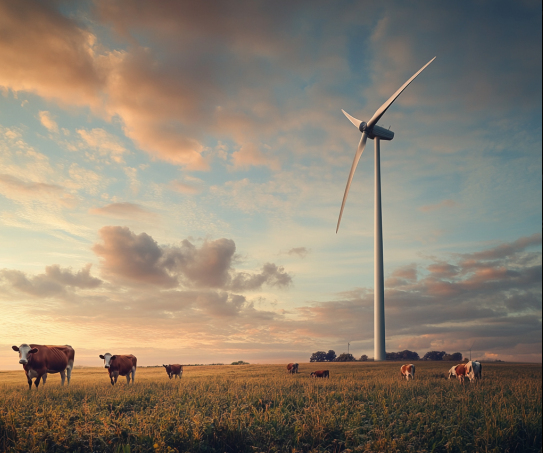
Pressure on Land Resources
Renewable energy systems need large areas of land. Unlike fossil fuels, solar and wind work best in specific locations and occupy more space. A solar farm or park may need five to seven acres per megawatt of productive capacity. Solar plant development requires land grading and vegetation clearing.
This demand creates tension in regions already managing competing land uses. However, projects can use land with steeper slopes and no water access, thanks to utility-scale photovoltaic (PV) technology advancements.
The urgency of climate change pushes for the rapid deployment of renewable energy. Projections estimate that renewables will supply 90% of the world’s power consumption by 2050, with solar and wind providing the majority. Yet, this transition must not compromise ecological integrity or social equity. Planners and stakeholders must use transparent processes and inclusive dialogue to integrate environmental and social considerations into the shift to cleaner energy.
Conservation and Habitat Displacement Risks
Important conservation areas frequently overlap with renewable energy facilities. Local impacts of renewables on biodiversity can be considerable. For example, wind turbines affect volant species, while solar PV can have significant effects, such as vegetation removal and soil degradation. Balancing development with conservation requires improved renewable energy land-use planning, alleviating some pressure on areas central to biodiversity.
Agricultural Land Conversion Challenges
Agricultural regions face growing pressure from renewable development, especially utility-scale solar projects that can displace cropland or disrupt irrigation infrastructure. While leasing land for solar offers farmers supplemental income, it may reduce long-term food production capacity.
Projections show that global food production’s 2005 levels may have to increase by as much as 100% by 2050 to meet rising demand driven by demographic and dietary shifts. Although improved agronomic practices can help, some agricultural expansion will be unavoidable due to stagnating efficiency gains.
At the same time, increasing demand to protect 30% of global land for biodiversity conservation intensify land scarcity. These overlapping pressures create a complex challenge for sustainability, where zoning laws and land use strategies must evolve to protect food systems while supporting renewable growth.
Land Use Conflicts With Indigenous Territories
Many renewable energy projects — especially in the western U.S. and Canada — overlap with Indigenous lands, creating a challenging gap between the rights and needs of Indigenous Peoples and the priorities of policymakers and researchers. A lack of established protocols for engaging with Indigenous Peoples in energy research can harm communities and offer little benefit in return.
Requiring Free, Prior and Informed Consent in energy transitions ensures Indigenous Peoples' collective rights to self-determination and participation in decisions affecting their lands and resources. These rights are essential for addressing historical marginalization and achieving social equity.
Transmission Infrastructure Complications
Renewable energy deployment is increasingly hindered by fragmented permitting systems and antiquated grid infrastructure. Conflicts over the placement of wind and solar energy facilities and significant resistance to the construction of new transmission lines arise on a state-by-state level because of the lack of cohesive federal regulation.
Even when projects secure permits, many remain stalled because they cannot connect to the existing grid. Permitting is a major bottleneck, particularly when rights-of-way cross many jurisdictions. When state and federal agencies fail to coordinate planning, they delay critical grid upgrades and block clean energy integration.
Land Surveying as a Hidden Variable
Land surveying is key for determining the feasibility of a project, its land acquisition costs and construction timelines. Planners often overlook this step early, causing unexpected delays and additional expenses. Topographic and boundary surveys influence site design and permitting. Their costs vary depending on the land's complexity and location, making accurate budgeting essential.
While professionals use traditional methods like Total Stations and GPS receivers, drones offer a faster, more cost-effective solution for big areas, though they may require FAA approvals. 3D laser scanning and photogrammetry can help map infrastructure by providing digital models for refineries and various facilities.
Policy Misalignment and Siting Delays
Several major sources of conflict or opposition can halt project planning, siting or permitting and lead to outright cancellation. It is uncommon for a project to face delays, stoppages or cancellations due to a single source of opposition. The most significant concerns often come from land value and environmental impact.
Additionally, issues related to land use — such as religious, cultural and recreational concerns — can contribute to delays. The potential for the site to serve other purposes — like agricultural ones — also raises objections. For example, solar farms may affect soil quality, reducing the land's future potential for crop production. Addressing these concerns is crucial for avoiding delays and ensuring the smooth progress of projects.
Toward a Sustainable and Inclusive Energy Future
The transition to renewable energy brings forth intricate land use disputes. These conflicts encompass conservation goals, Indigenous rights, food security and infrastructure demands. To effectively tackle these issues, it is essential to implement comprehensive planning, enhance policy coordination and honor various land values.
The journey toward clean energy should establish a foundation based on equity and sustainability. By harmonizing development with environmental and social considerations, stakeholders can facilitate a transition to renewable energy that fosters a more inclusive and sustainable future for everyone.

